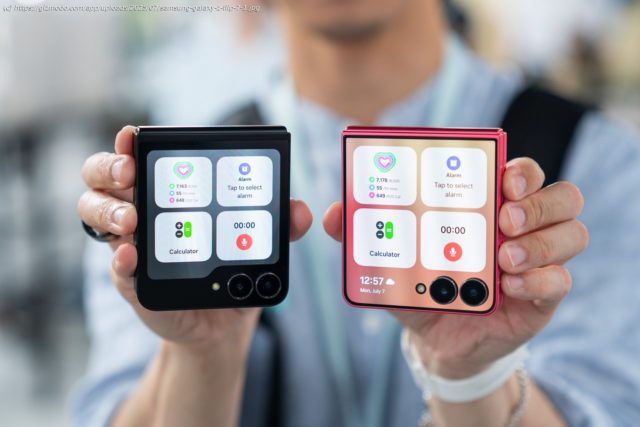Samsung’s flip-style foldable phone is so close to perfection.
Despite the new look, the Galaxy Z Flip 7 is a far-too-similar foldable to the Galaxy Z Flip 6. The new clamshell phone has a larger exterior screen that integrates (with a heavy sigh) Google Gemini, but compared to the Galaxy Z Fold 7, the Z Flip 7 is still thick enough that it will protrude like a bony crag from any user’s thin pockets. I understand why Samsung places so much emphasis on its expensive flagships, but the fact is there are more people walking around with Flips than Folds in hand. Until we get a device as thin as the old-school Razr flip phones of yesteryear, the potential of foldables will remain untapped.
Folding phones are more fragile than candy bar-style devices. It comes down to the extra mechanical failure points from having a hinge, plus the need to have a thinner display that can bend. For the Z Fold 7, Samsung spent a lot of time talking up how thin it was while expounding on how much more durable it is compared to past generations. There’s a new hinge system with its “dual rail structure” that helps the screen bend into a teardrop shape when closed up. Even better, the Z Fold 7 is now 8.9mm when closed up—barely any thicker than a Galaxy S25 Ultra. The Z Flip 7 is 13.7mm, less than the 14.9mm of the last-gen model. It’s an improvement, but practically, it’s still not something meant for anything but an extra bag.
There may be a good reason we don’t have a Flip as thin as a Fold. The book-style foldable has more room for a bigger battery (4,400 mAh, the same capacity as last year’s Z Fold 6), enough to power the Qualcomm Snapdragon 8 Elite chip. Instead of Qualcomm, Samsung opted for a 3nm Exynos2500 chip for the Z Flip 7 with potentially less power demand. Current battery and chip constraints may have forced Samsung to keep the clamshell thicker.
Size and survivability matter more with foldables than any other thin phone, and far more than any Galaxy S25 Edge-like device.






